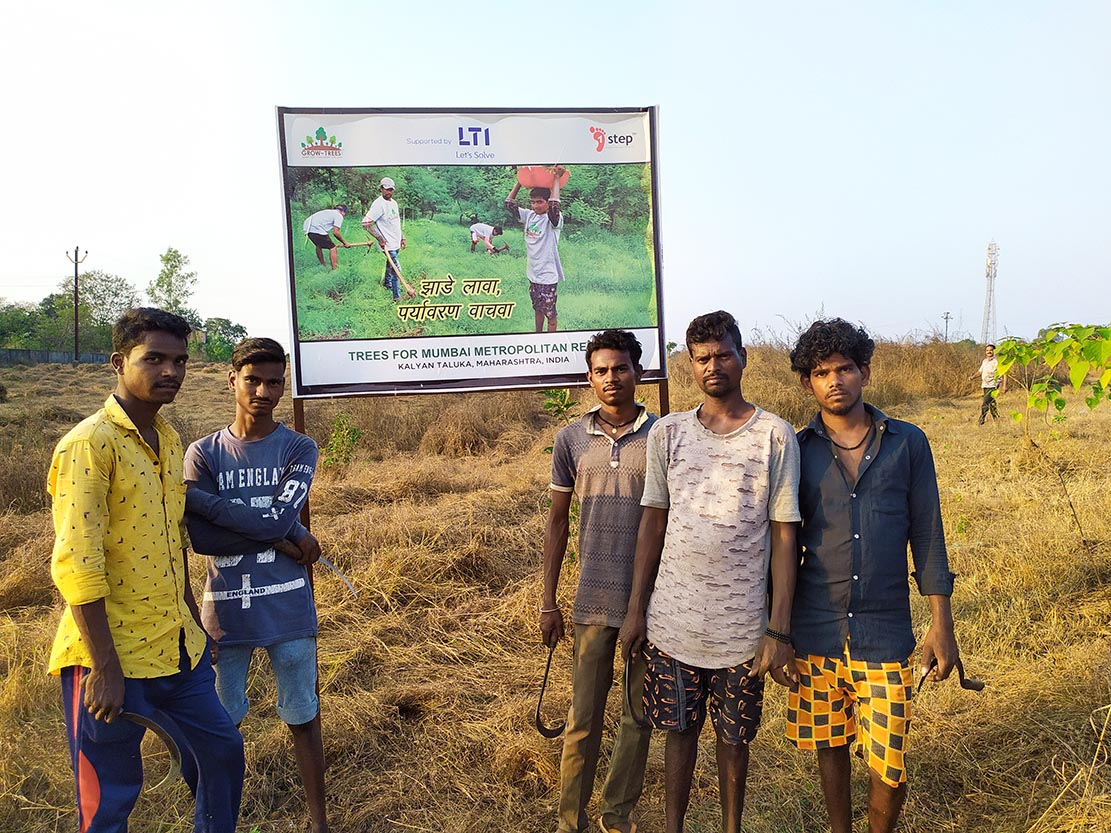
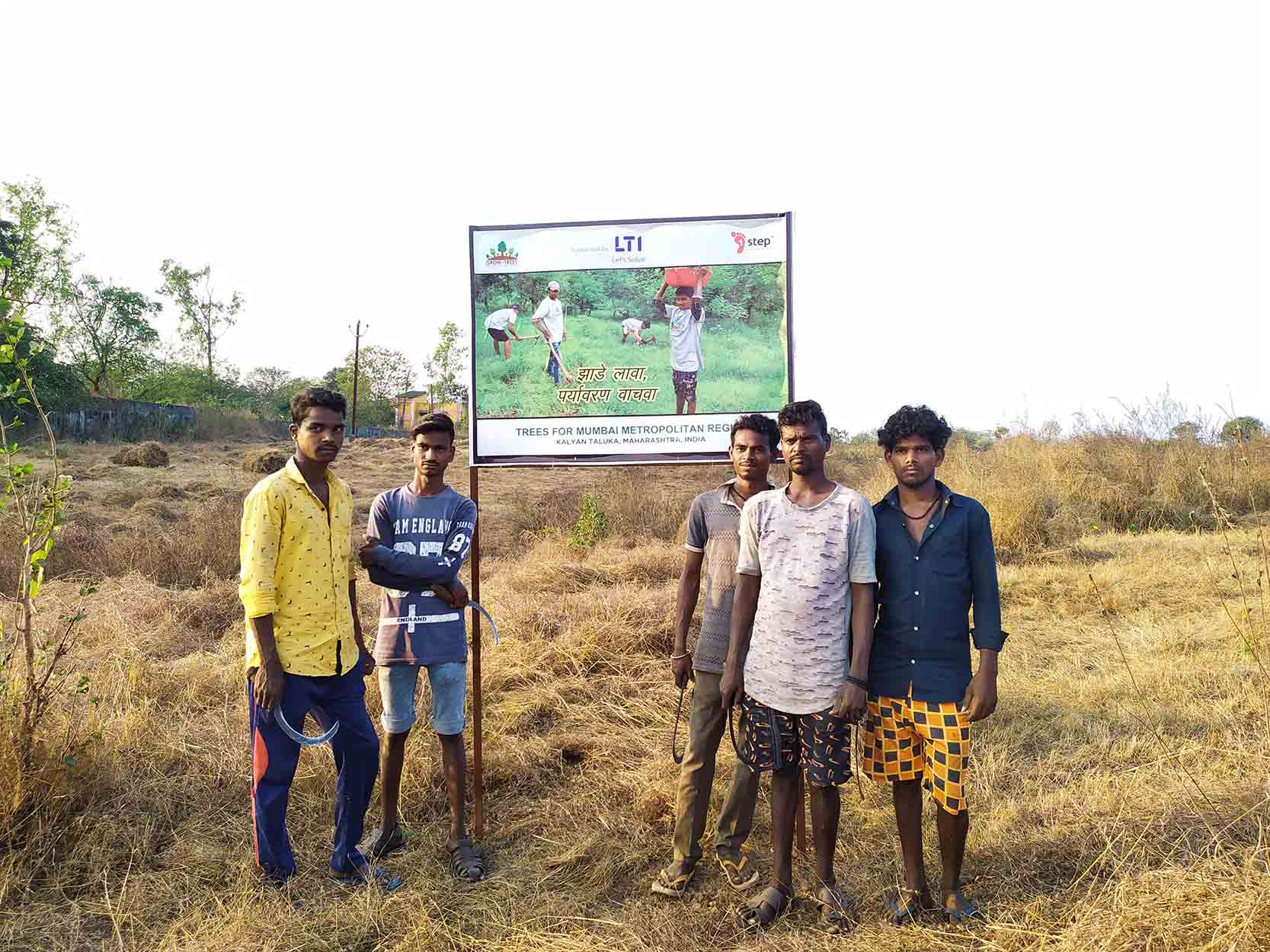

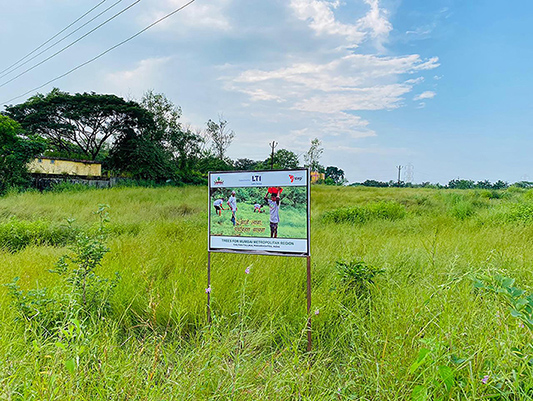
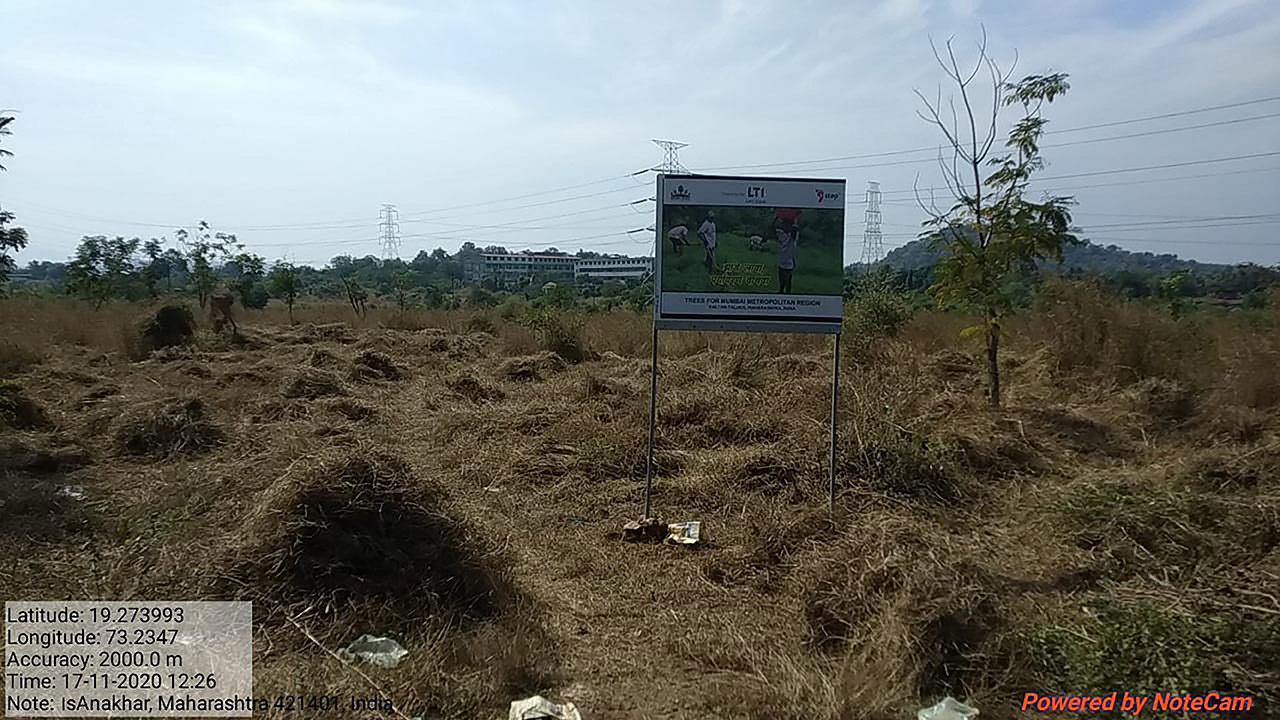

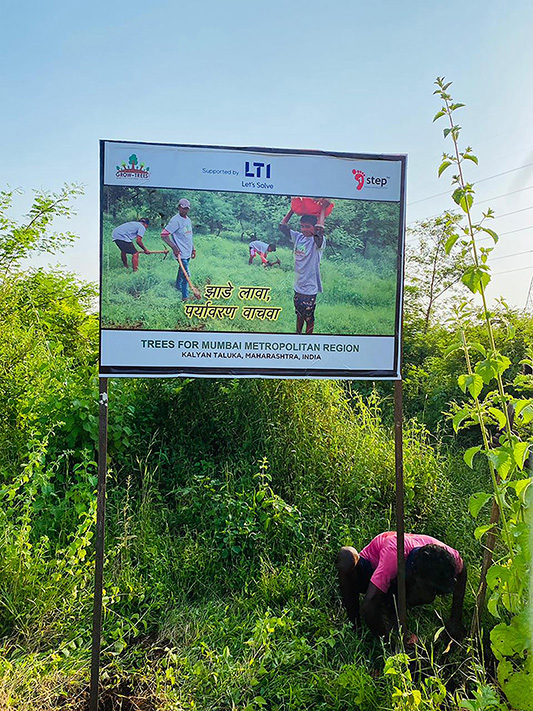
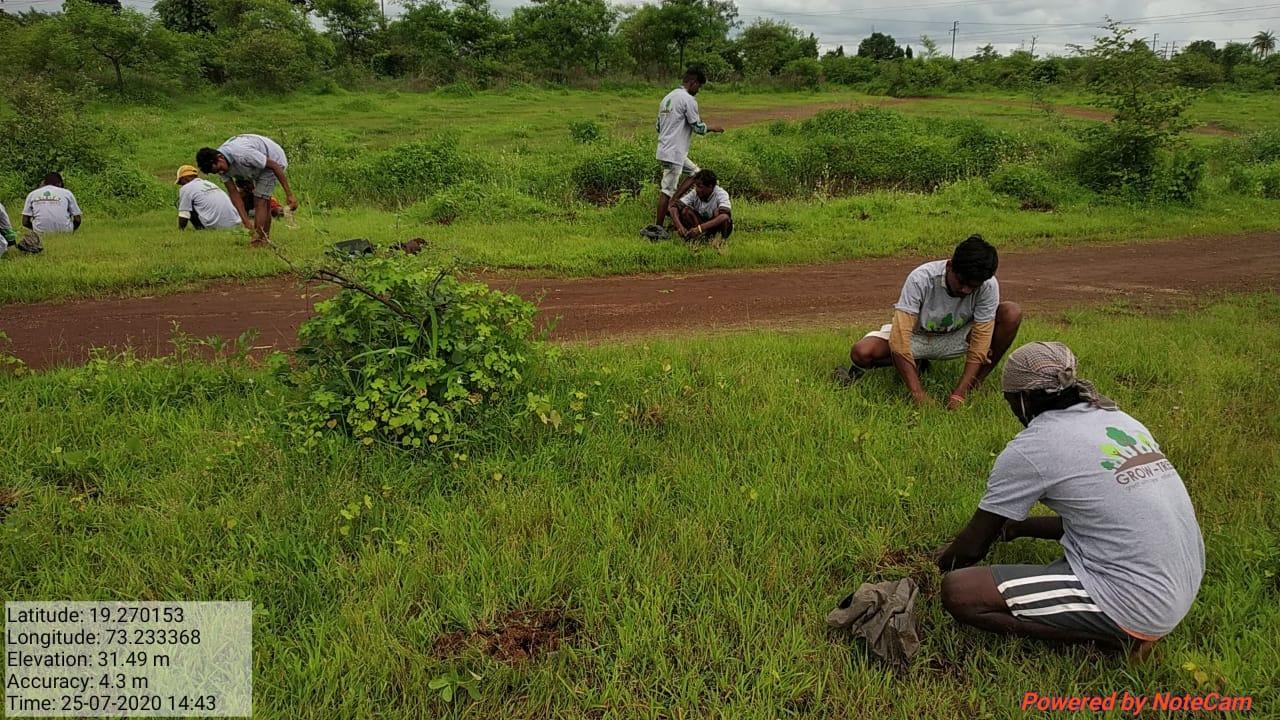

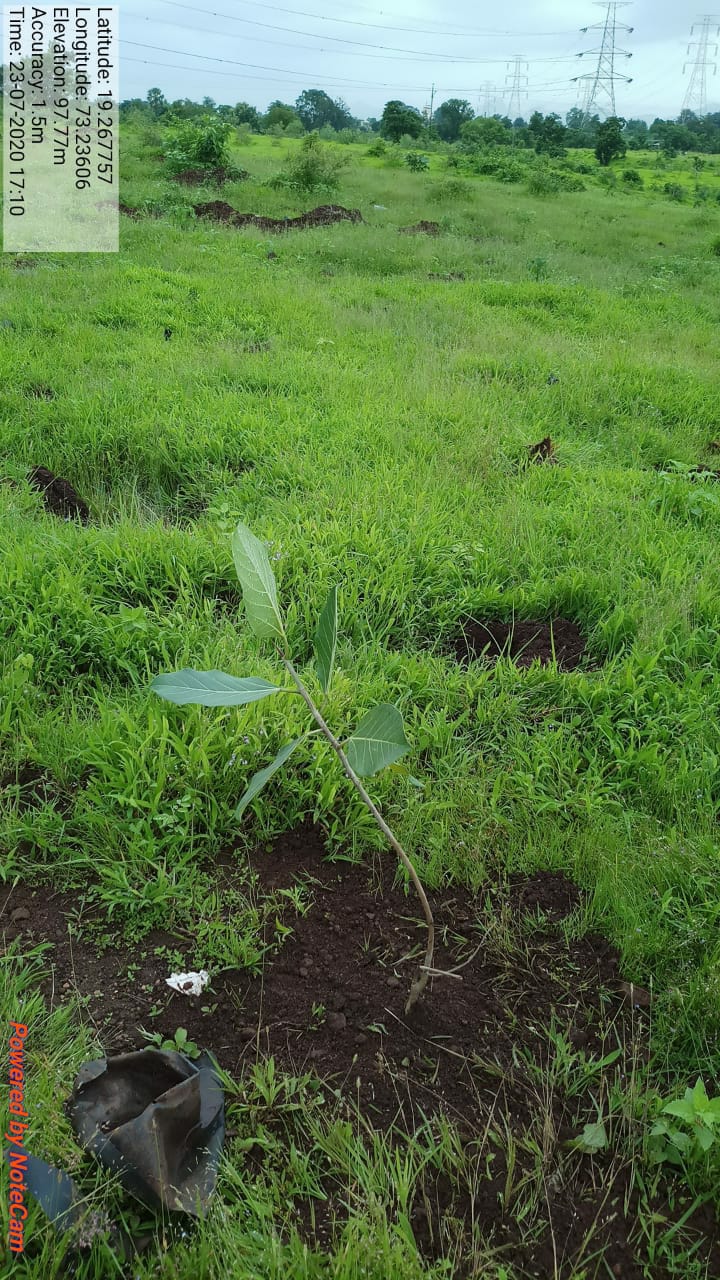

Project Target
0% Remaining
40,000
Trees Planted out of 40,000 Trees

Project Location:
Plantation of local tree species on Gram Panchayat land in Govli/Revli villages of Kalyan Taluka in the Thane District of Maharashtra.
Project Aim
According to the most recent article in the Hindustan Times, “Despite a decline in vehicular pollution during the lockdown due to the Covid-19 pandemic, there has been an increase in urban ground-level ozone, a harmful pollutant, across 10 Maharashtra cities, according to an analysis of the National Clean Air Program (NCAP). Surface ozone (O3) is a photochemical oxidant, which is formed when volatile organic compounds and oxides of nitrogen (NOx) chemically react in the presence of heat and sunlight.” Ronak Sutaria, founder and director of RLS, was also quoted in the article, having said that the “Breathing air with high ozone poses a risk for people with asthma and other lung ailments especially for children, older adults, and those active outdoors such as daily wage workers.” It is not surprising that both Mumbai and Thane were a part of the list. Due to urbanisation and massive deforestation activities, the cities have lost major parts of their greenery, which is now affecting the weather regulations. Trees are the most natural way of removing toxic agents from the atmosphere and have gradually become a necessity in and around the cities of India.
Further, the region around the Thane district has been facing deforestation in cyclic rounds for years, not only affecting tribal livelihoods but also making the district vulnerable to natural disasters. According to an article by The Better India, “A forested area and an oxygen lung, the area lost all of this to high pollution levels, deforestation and soil erosion.” The trees planted here will extend to benefit not only the village but also the city of Mumbai due to the proximity. With the rising air pollution levels and land degradation, reforestation has become a necessary measure for the preservation of the ecosystem. The Society for Ecological Restoration says that development is incomplete without the inclusion of the ecology and promotion of sustainable development. Plantation of mixed species balance the nutrient content of the soil, increase its nitrogen-fixing capability, produce root exudates, and provide protection from pests and diseases.
Thane was also one of the most hit regions during cyclone Nisarga (2020) and others in the past. The cyclones lead to major socio-economic losses, including the loss of green cover. The project aims to restore the lost forests and rebuild healthy biodiversity for the region.
Mango (Mangifera Indica), Chikoo (Manilkara Zapota), Jackfruit (Artocarpus Heterophyllus), And Guava (Psidium Guajava, Teak Wood (Tectona Grandis), Acacia (Acacia Auriculiformis), Karanj (Millettia Pinnata), And Neem (Azadirachta Indica).
The planting of 40,000 trees near the urban landscape of Mumbai will help in increasing forest cover for nearly 50 acres of land, improving the habitat for indigenous wildlife species. Trees will help to improve the overall air quality and ecosystem. By acting as carbon sinks, they will help to compensate for the greenhouse effect through the sequestration of approximately 1 million kg of atmospheric carbon dioxide annually. Trees will aid in removing particulate matter from the atmosphere, particularly small particles that are responsible for major air-pollution-related health hazards. Trees along urban areas can reduce the presence of fine particulate matter in the atmosphere within a few hundred meters of the plantation range. These trees will also prove beneficial in reducing topsoil erosion, decreasing the force of storms and down water runoff which in turn will help to replenish the groundwater table. Roots are especially beneficial for removing harmful nutrients from the aquifers. This also results in the overall reduction in street flooding and sedimentation in streams.
Not only this, but these trees will provide shelter and food for a variety of birds and animals. They will help to maintain and sustain the local biodiversity by improving natural habitats. Flowers, fruits, leaves, buds, and woody parts of trees are useful to different species of birds and animals. Thus, the project also contributes positively to the United Nations 2030 agenda on Sustainable Development Goals on Climate Action (13) and Life on Land (15) with the promotion of large native forests.
Social Impact of Growing Trees
Community Engagement
Tree planting initiatives often involve local communities, which can lead to greater community cohesion.
Ecological Education
Provides opportunities for community members, especially children, about the importance of environmental sustainability.
Urban Beautification
Trees contribute to the aesthetic enhancement of urban areas, making cities more pleasant and liveable.
Climate Resilience
By improving green cover, tree planting helps make communities more resilient against climate impacts like heatwaves.
Employment Creation
Planting trees creates employment for local community members like planting and maintenance, administrative roles, and more long-term jobs in management.
Wildlife Habitat
Trees provide critical habitats for various species of wildlife. Enhancing tree cover helps preserve biodiversity, which can be an ecological boon for local communities
Copyrights @ 2025 All rights reserved by Pangea EcoNetAssets Pvt Ltd.